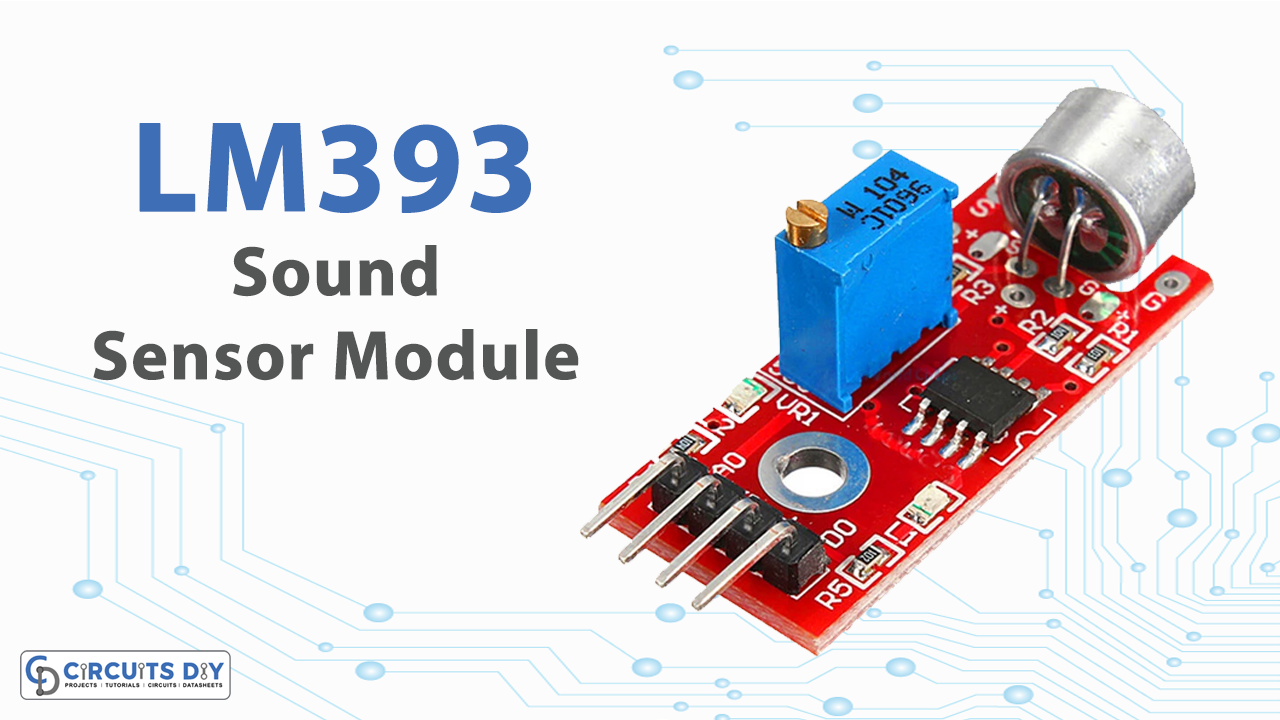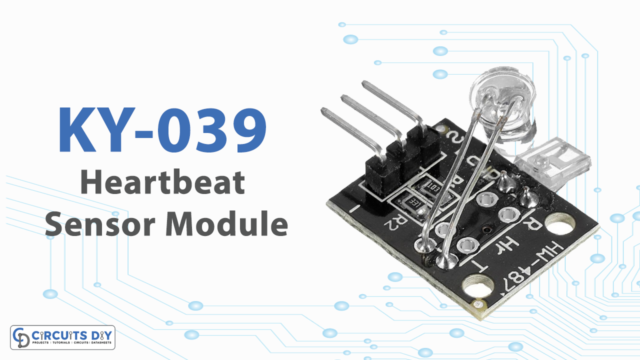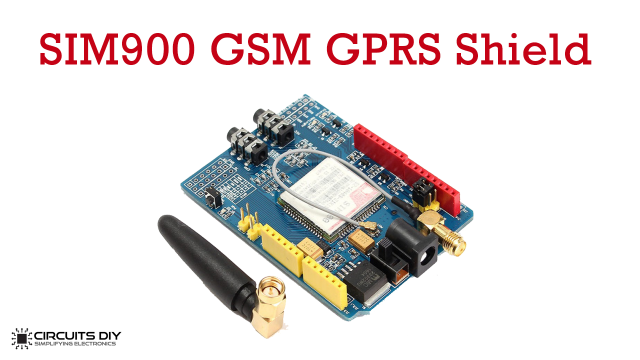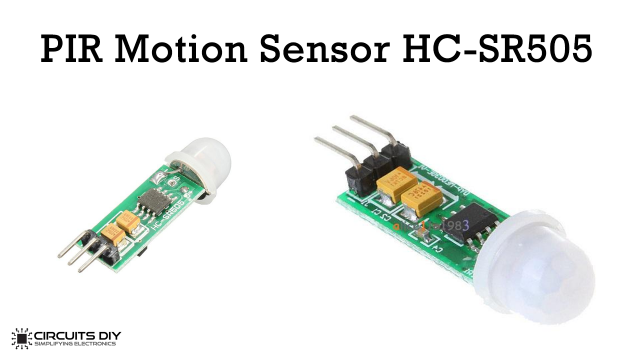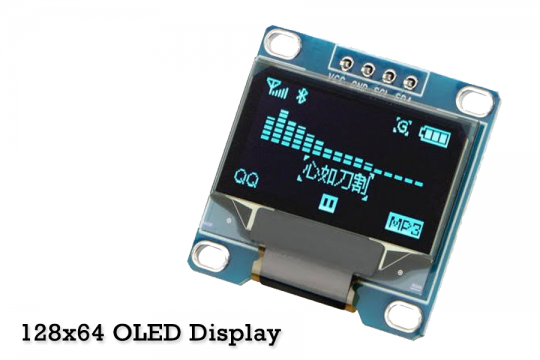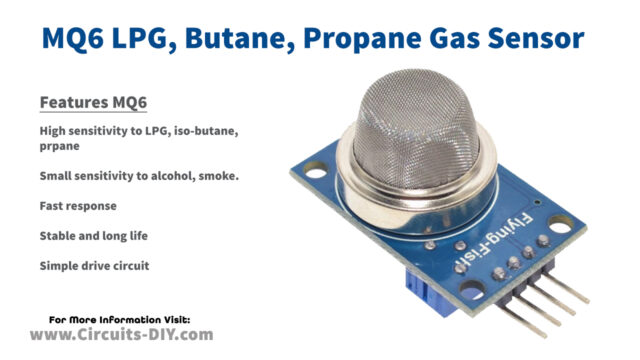A Sound Sensor is a simple device that detects sound. It simply presents a Microphone with some other circuitry. Using a Sound Sensor, one can estimate the intensity of sound from different sources like claps, loud voices, etc.
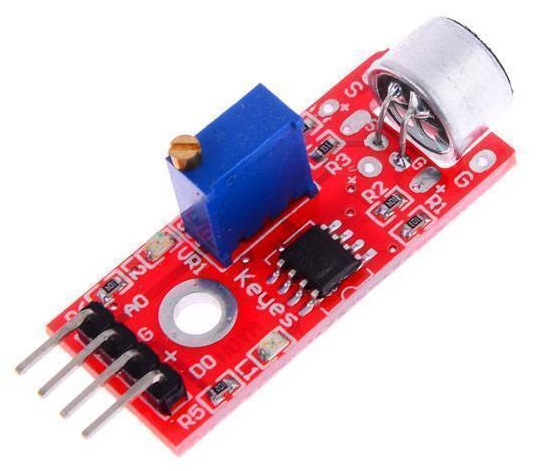
Hardware Overview
The LM393 sensor’s hardware comprises some major components including a capacitor, resistor, Microphone, potentiometer, comparator LM393 IC, Power, and status LED on the board.
LM393 IC
This sound detection sensor uses lM393 Comparator IC as a voltage comparator in this Module. We connect pin 2 of LM393 to the Preset (10KΩ Pot) while we connect pin 3 to the Microphone. The comparator IC compares the threshold voltage set using the potentiometer and the Microphone pin.
Potentiometer
The module has an onboard potentiometer. With the help of this pot, one can adjust the threshold sensitivity of the digital output.
Microphone
The microphone in the sensor is there to detect the sound. It then feeds this sound into the LM393 IC.
Interfacing with Microcontroller
Interfacing this Sound Detection Sensor Module with a microcontroller is not difficult and is almost as much the same as others. You need to connect the Analog/Digital output pin of the sensor to the Analog/Digital pin of the Microcontroller. Then you need to connect VCC and GND pins to the 5V and GND pins of the Microcontroller, respectively. When the sound level increases above the setpoint, an LED on the module is lit up and it set the output low.
Features and Specifications of LM393 Sound Sensor
Features
- These sensors are very simple to use
- It gives an analog o/p signal
- Simply incorporates using logic modules on the input area
- LM393 comparator with threshold preset
- Easy to use with Microcontrollers or even with normal Digital/Analog IC
- Small, cheap, and easily available
Specifications
- Operating Voltage: 3.3V to 5V DC
- PCB Size: 3.4cm * 1.6cm
- Induction distance: 0.5 Meter
- Operating current: 4~5 mA
- Microphone Sensitivity (1kHz): 52 to 48 dB
- The operating current is 4~5 mA
- The voltage gain 26 dB ((V=6V, f=1kHz)
- The sensitivity of the microphone (1kHz) is 52 to 48 dB
- The impedance of the microphone is 2.2k Ohm
- The frequency of the m microphone is 16 to 20 kHz
- The signal-to-noise ratio is 54 dB
Pinouts of LM393 Sound Sensor
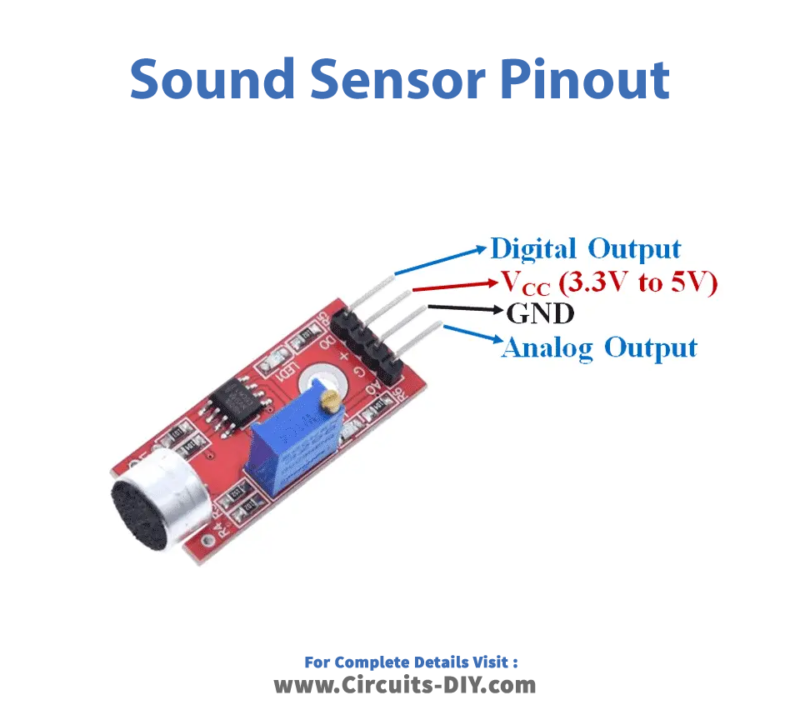
| Pin Name | Description |
| VCC | The Vcc pin powers the module, typically with +5V |
| GND | Power Supply Ground |
| DO | Digital Output Pin. Directly connected to the digital pin of the Microcontroller. |
| AO | Analog Output Pin. Directly connected to an analog pin of the Microcontroller. |
Applications
Speech Recognition Technology
Speech recognition which is also named automatic speech recognition, or speech-to-text, is a device that allows a system to process human speech into a written format. Hence this technology requires sound sensors.
Hearing Aid Devices
A hearing aid device t is the universal solution for individuals who are completely or severely deaf. The purpose of a hearing aid is to amplify the sound coming, suitable for mild hearing impairment. This device also requires a sound sensor and can employ an LM393 sound sensor.

